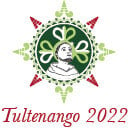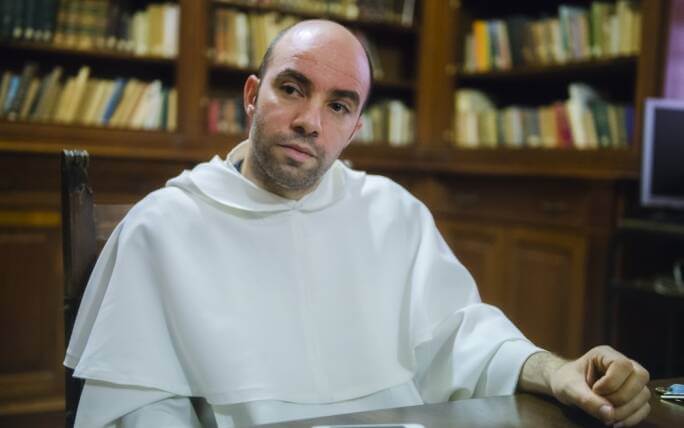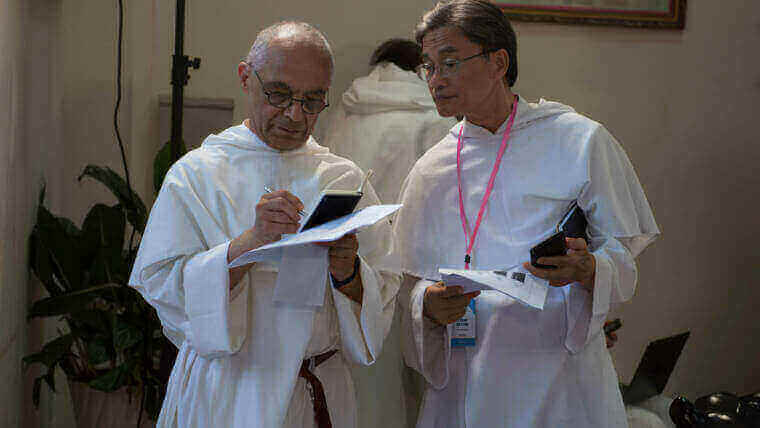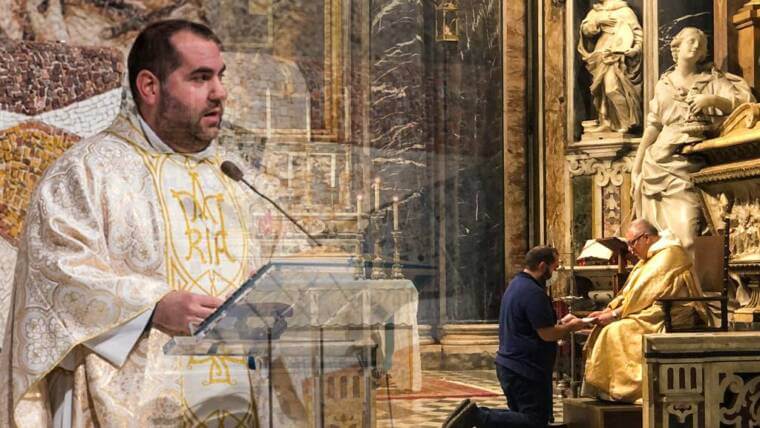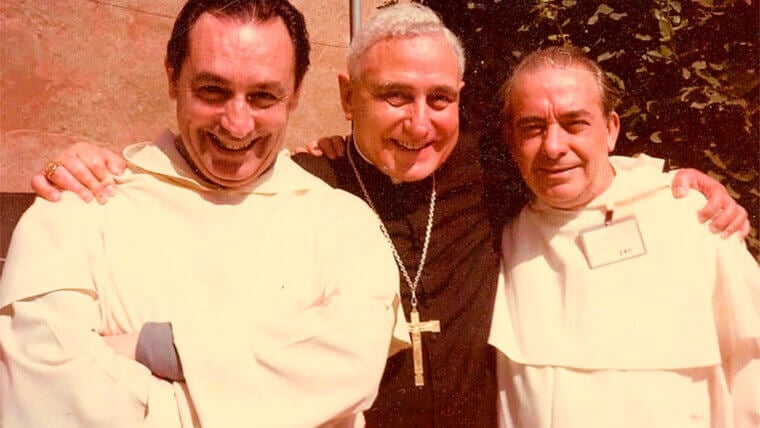Convened by the Historical Institute of the Order of Preachers, the historians met in Avila and Salamanca from 6 to 11 September.

In a non-representative survey of my sisters about how many times an event should be held to establish a tradition, the answer was clear: three times. Considering that this is indeed a revived tradition of several previous meetings between 1996 and 2006, the regular conferences of Dominican history students, organised by the Historical Institute of the Order of Preachers, should now be firmly established. After Toulouse (2016) and Rome (2020), this year’s meeting was held in Ávila and Salamanca from 6-11 September. These two places are of great importance for historians, not least of the Order, since the Convent of San Esteban at Salamanca houses the archives of the Spanish Province, and the Convent of Santo Tomas in Ávila holds the documents of the Holy Rosary Province, which are of incomparable value for the missionary history of the Order. It was therefore doubly gratifying that among the twelve students, at various levels from baccalaureate to doctorate, from France, Germany, Italy, Poland, and the USA, there were also six brothers from Myanmar, Vietnam and the Philippines. The Institute was represented by its President, Brother Viliam Štefan Dóci, OP, Brother Gabriel P. Hunčaga, OP, Brother Alejandro López Ribao, OP, and Sister Sabine Schratz, OP. Organisational assistance was provided by the Order’s Syndic, Brother Juan Luis Mediavilla García, OP. A special honour was the presence of the Dean of Theology at the Angelicum, Brother Dominik Jurczak, OP.
The first day and part of the second were devoted to an exchange of ideas on the participants’ current research projects, which cover a wide range of time periods, geographical areas and methodological approaches. Br. Viliam Štefan opened the discussions with a presentation on the history and aims of the Historical Institute. Sr. Sabine introduced her project on Michael Browne as Master of the Order (1955-1962). Br. Alejandro, in his presentation on research in the General Archives of the Order, stressed the importance of knowing the history of an archive in order to understand its holdings. These talks were followed by a number of projects on intellectual history: Brother Paul Clarke, OP, spoke on “The Economy of Prophecy in Mendicant Scholastic Thought.” Brother Justinus Grebowitz, OP, unfolded “Thomas Aquinas’ concept of poverty in Contra impugnantes dei cultum et religionem,” and Brother Maxime Arcelin, OP, explained the archival sources for his work on “Preaching in late 15th century Siena.”
A second session focussed on the history of the Order in the Pacific. Brother Felix Delos Reyes, OP, spoke on “Looking Back, Looking Forward: Some Points on the Salamanca Process and the Philippine Context”; Brother Wilhelm Boñon, OP, presented “The Contributions of the Spanish Dominicans to the Growth and Development of Manaoag.” They were followed by Brother Hilario Vasco Sicat, OP, on “Salazar and Benavides: The Dominicans at the Beginning of the Spanish Colonisation of the Philippines (1582-1599),” Brother John Baptist Vu Thach Vinh, OP, on “Geronimo Hermosilla O.P. (1800-1861) and the Dominican Mission in the North of Vietnam during the Persecution of King Tự Đức”. Finally, Brother Stephen Saw Lej Kapaw Htoo, OP, on “Apostolic Work of the Dominicans (Friars) in Burma/Myanmar.”
After this rewarding marathon of lectures, a guided tour of the city of Ávila was a welcome opportunity to stretch our legs and walk in the footsteps of St. Teresa along walls and churches. The trip was enriched by the commentary of our very knowledgeable guide.
The second day began with two excellent conferences, one by Professor Anna Busquets (Universitat Oberta de Catalunya) on “Sources for the study of the Dominicans in Asia in the Archives of the Holy Rosary Province” and the other by Professor Antonio Doña (Sophia University Tokyo) on “Dominicans out of the Royal Patronage Circuit”, focusing on the ecclesiastical authority exercised in the missions by Propaganda Fide, founded in 1622. After a short break, we visited the Archives of the Province of the Holy Rosary where Brother Emiliano Pérez Peña, OP, guided us through the collections.
In the afternoon, Brother Gabriel P. Hunčaga, OP, gave a report on “Missionary activities of the Dominicans before 1492.” Brother Tomasz Kalisz, OP, presented his work on “The Foundation Dynamics of the Convents of the Polish Dominican Province in the 13th Century against the Background of the Order,” Brother Gabriel Jordan Theiss, OP, on the ecclesiology of Juan de Torquemada and Mervin Lomague on the “Raids, Survival, and Politics: A Preliminary Survey on the Condition of the Dominican Missions to the Igorot Villages of Luzon Island, Philippines (16th to 19th Century).” Br.Viliam Stefan concluded this session with an overview of his research on “Philosophical-theological training and scholarly activity of the Friars Preachers in Vienna in the 17th–18th centuries.”
Early on Saturday morning we set off for Salamanca to visit the Convent of San Esteban, with its connection to the world-famous university and the School of Salamanca gathered around Francisco de Vitoria and Domingo de Soto, and its archives. We were expertly guided by Brother Lázaro Sastre, OP, and Brother Antonio Galán Meneses, OP, assisted by Brother Sixto José Castro, OP, who joined us as an interpreter. After a long and very enjoyable lunch together, we had time to explore the city on our own or in small groups.
The conference ended on Sunday with a final discussion on how historians in the Order can continue to support each other. Ideas abounded as to where the next meeting could be held and what topics might be explored. In the afternoon Br. Emiliano gave us another gift of his time and showed us around the convent in Ávila.
On behalf of all participants, I would like to take this opportunity to express our sincere thanks to all those who made this conference such a success: the organisers, Br. Viliam Štefan, Br. Alejandro and Br. Juan Luis; the community of Ávila, which gave us a warm welcome; the archivists and experts invited; and finally, all the speakers, who, through the presentation of their research, made the conference a formative experience for us all.
“History,” Miguel de Cervantes has his Don Quixote say, “is a kind of sacred writing, because truth is essential to it; and where truth is, there God himself is.” Of course, given the irony inherent in Cervantes’ masterpiece, this is to be read cum grano salis. All disclaimers aside, may it be an invitation to young Dominicans to take up the study of history and contribute to the exploration of the rich tradition of the Order of which we have had such an excellent taste at this meeting.
Sister Sabine Schratz, OP






